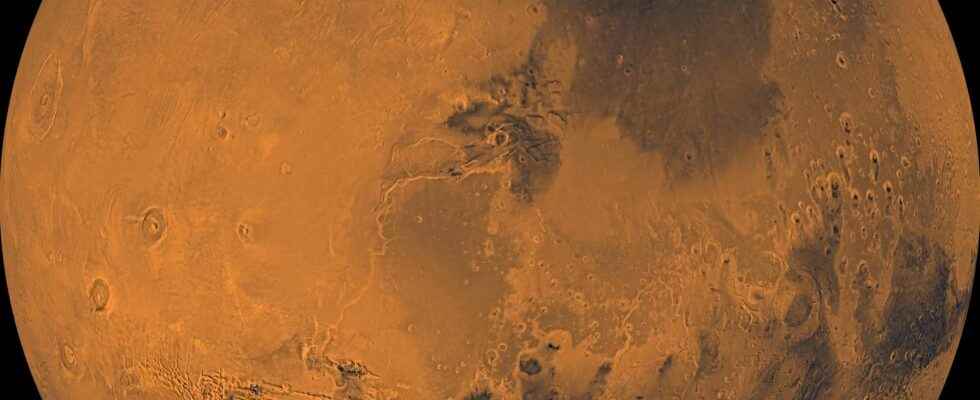You will also be interested
[EN VIDÉO] Mars InSight: a geophysicist on Mars Launched in May 2018 and installed on Mars in November, the InSight lander must explore the least well-known environment of the Red Planet: its basement, up to its core. Thanks to sophisticated instruments, including a seismometer and a five-meter drill, it has enough to help us better understand our little neighbor.
The Red Planet has been, like the Earth, the seat of violent tectonic activities, as evidenced by certain rugged structures on its surface such as Valles Marineris, a vast network of canyons extending over nearly 4,000 kilometers. And Mars still continues to be seismically active today. Since the arrival ofInSight in the region ofElysium Planitia November 26, 2018 and the deployment of its seismometer Seisthe first direct observations of earthquakes Martians have been made. The epicentres of the most violent were located in the region of Cerberus Fossaecharacterized by a series of faults more than 1,000 kilometers long and formed less than 20 million years ago, and having sheltered volcanic activity that is still very recent (less than 200,000 years).
A concern for noise in the analysis of seismic data
But due to magnitudes relatively weak martian earthquakes and a potentially high noise level, the detection as the certain identification of these tremors is not easy. A team of scientists China and Australia have thus developed two new models for analyzing seismic data, enabling them to identify low-magnitude earthquakes previously drowned in ambient noise. Their new analysis methods then allowed the identification of 47 new repetitive and relatively similar seismic events in the data collected by Seis, probably located in nearby regions, around Cerberus Fossaeand associated with two previously detected earthquakes.
A new suspect to explain the Martian earthquakes?
Before the detection of these 47 new seismic events, the hypotheses as to the events at the origin of Martian earthquakes were already multiple: certain earthquakes, detected during the Martian night, would be caused according to scientists by the cooling and the contraction of the planet; others argue that the interactions between Mars and its two satellites, Phobos and Deimoscould also generate earthquakes due to tidal effects – in the same way that the gravitational attraction exerted by the Earth on the Moon generates lunar earthquakes.
But the detection of these new earthquakes, observed day and night, does not seem to be linked to the movements of the two satellites of the planet, thus dismissing these two hypotheses to explain their origin. The high depth of their epicentres also seems to rule out a possible tectonic origin along the normal faults of Cerberus Fossae.
The scientists then chose to reason by making analogs with our Planet: on Earth, the vast majority of earthquakes are distributed along the borders between the tectonic plateswhile a small part – about 10% – of Earth’s earthquakes originate inside the plates lithospheric. Mars, on the other hand, has no active tectonic plates: thus, since the Red Planet has only one plate, we can compare Martian earthquakes to terrestrial earthquakes within lithospheric plates.
On Earth, if intra-plate earthquakes are not caused by slips along faults, their origin is then generally linked to volcanic events, or to movements of underlying fluids. By combining these comparisons with the recent volcanic structures of Cerberus Fossae, scientists tend to think that volcanic activity could be the cause of these freshly analyzed earthquakes; however, on Earth, volcanic earthquakes generally result in volcanic eruptions, while these new earthquakes were not accompanied by any eruption. The team explains the lack of eruption associated with these earthquakes in part by the high thickness of the crustpreventing the wash to reach the surface. According to the scientists, the number of repetitive earthquakes detected day and night would be a sign of movements in the interior of Mars, and the seismic activity detected around Cerberus Fossae would be caused by movements of molten rock in the coat superior Martian, which in this case would be more active than previously thought.
Interested in what you just read?
